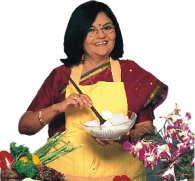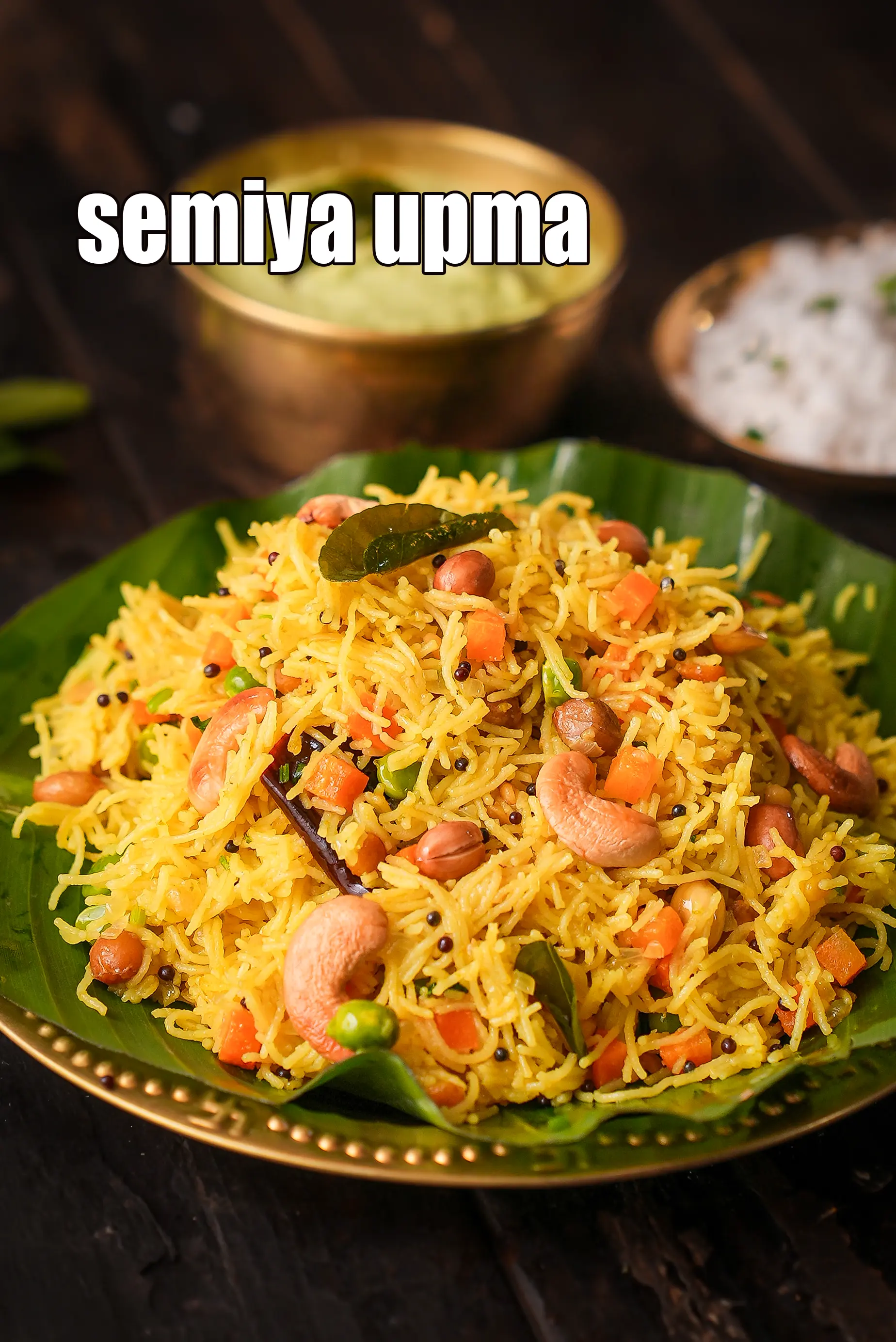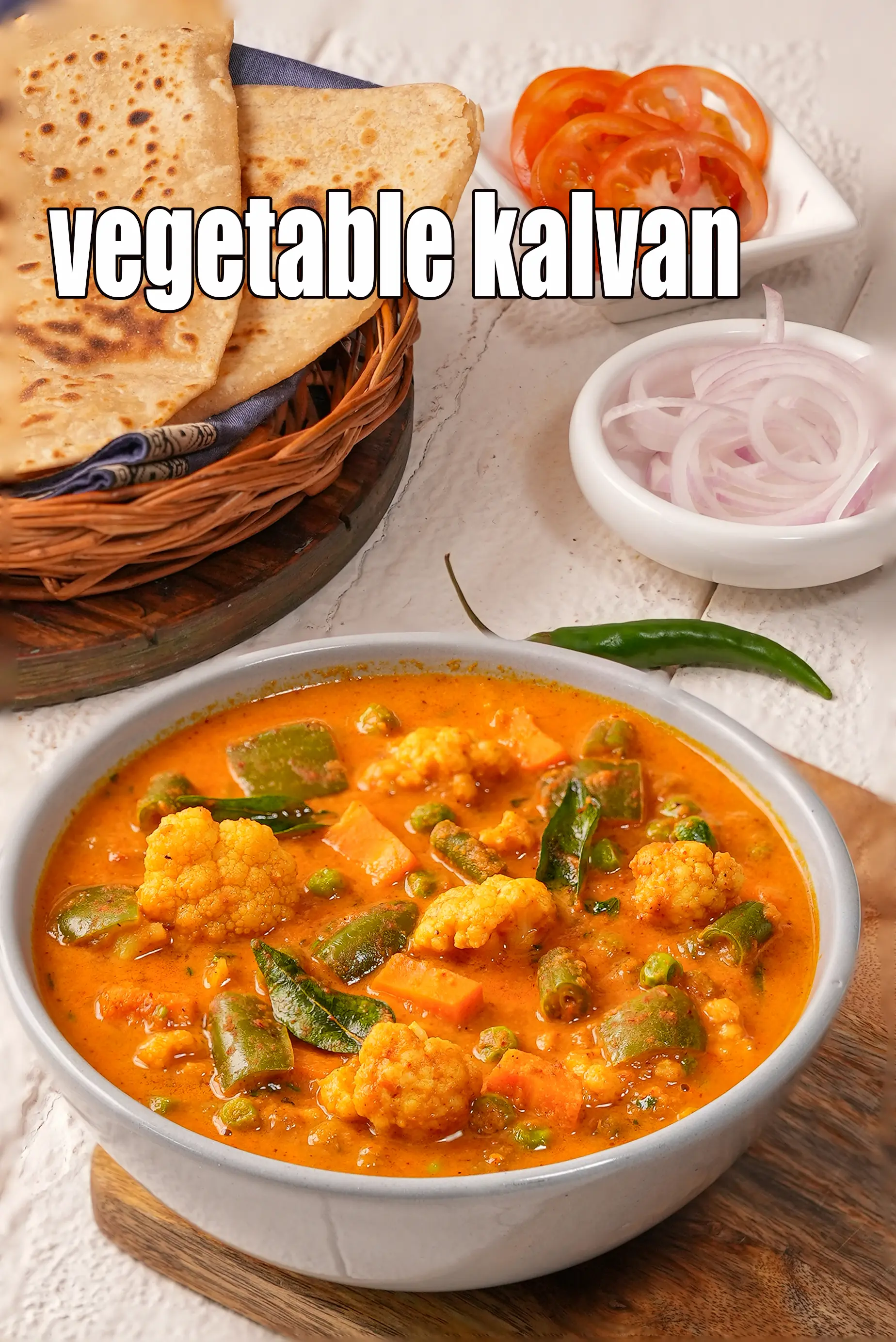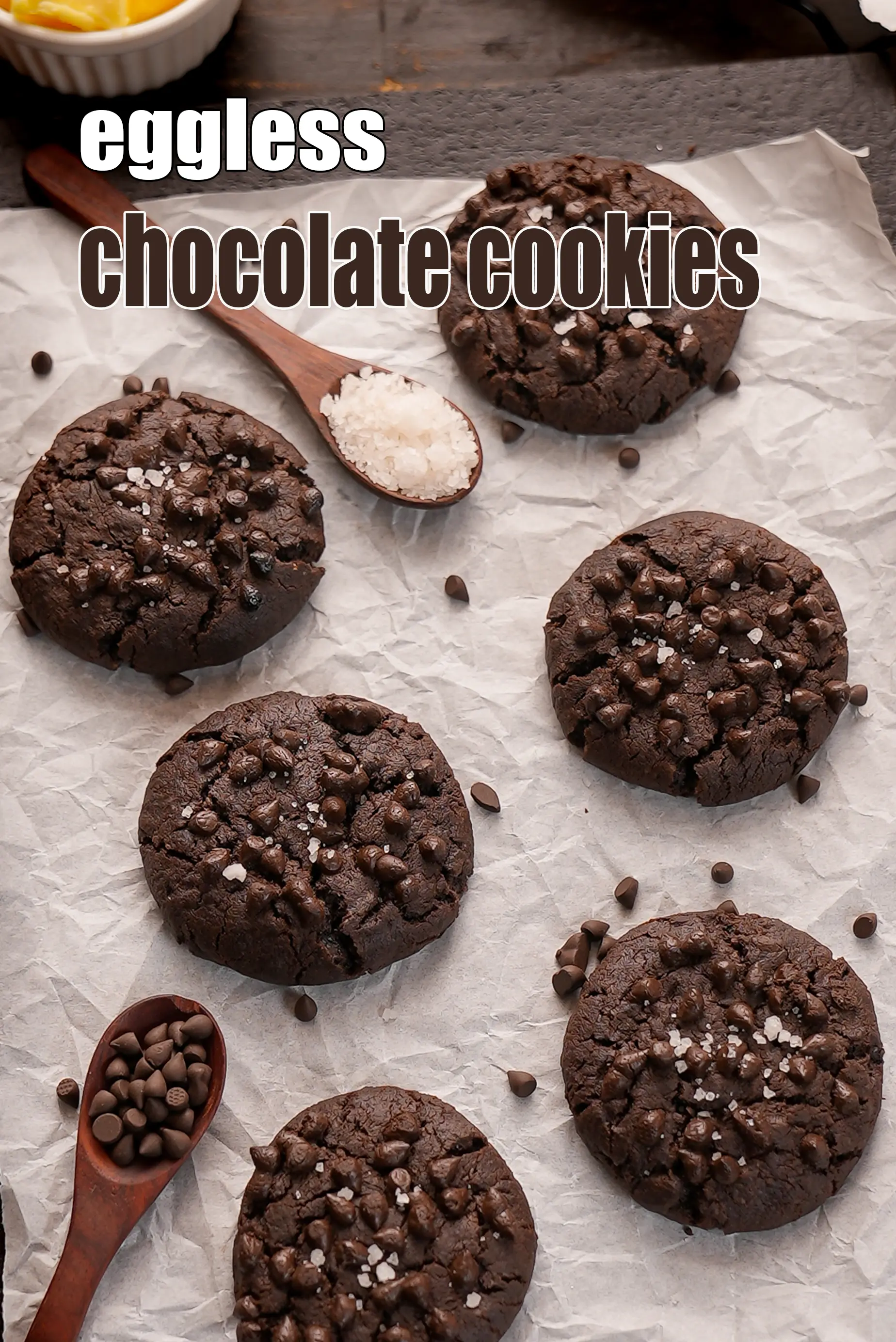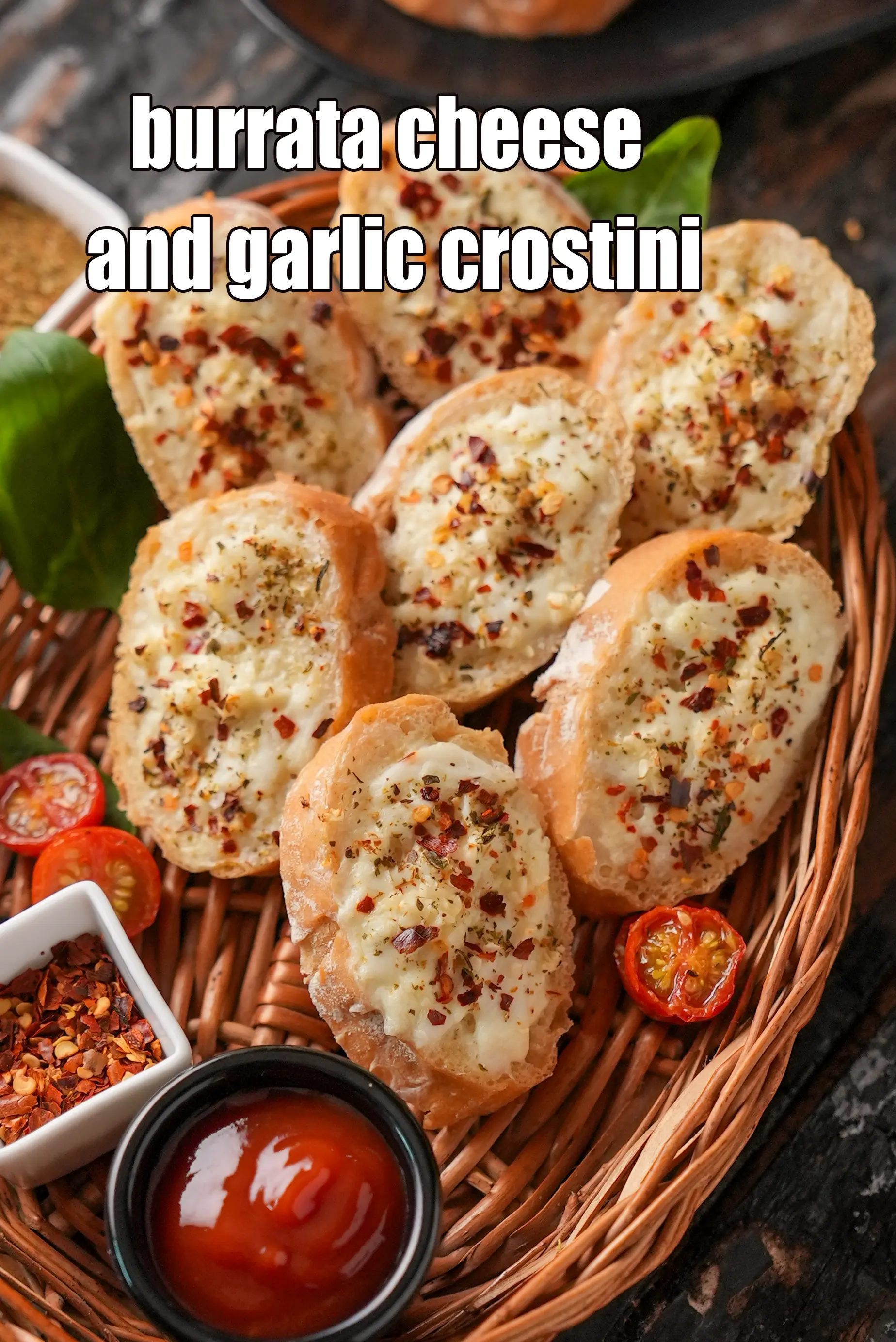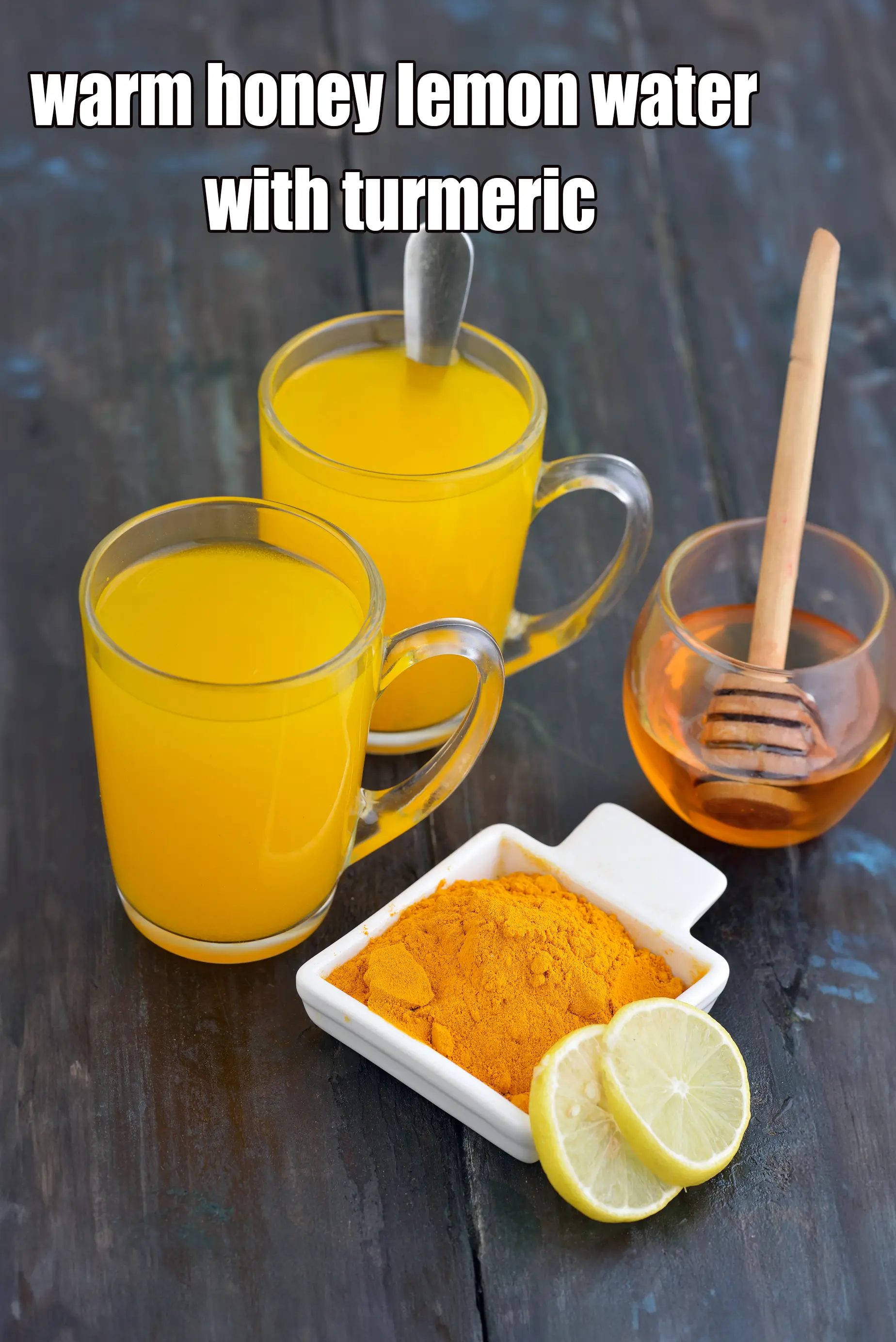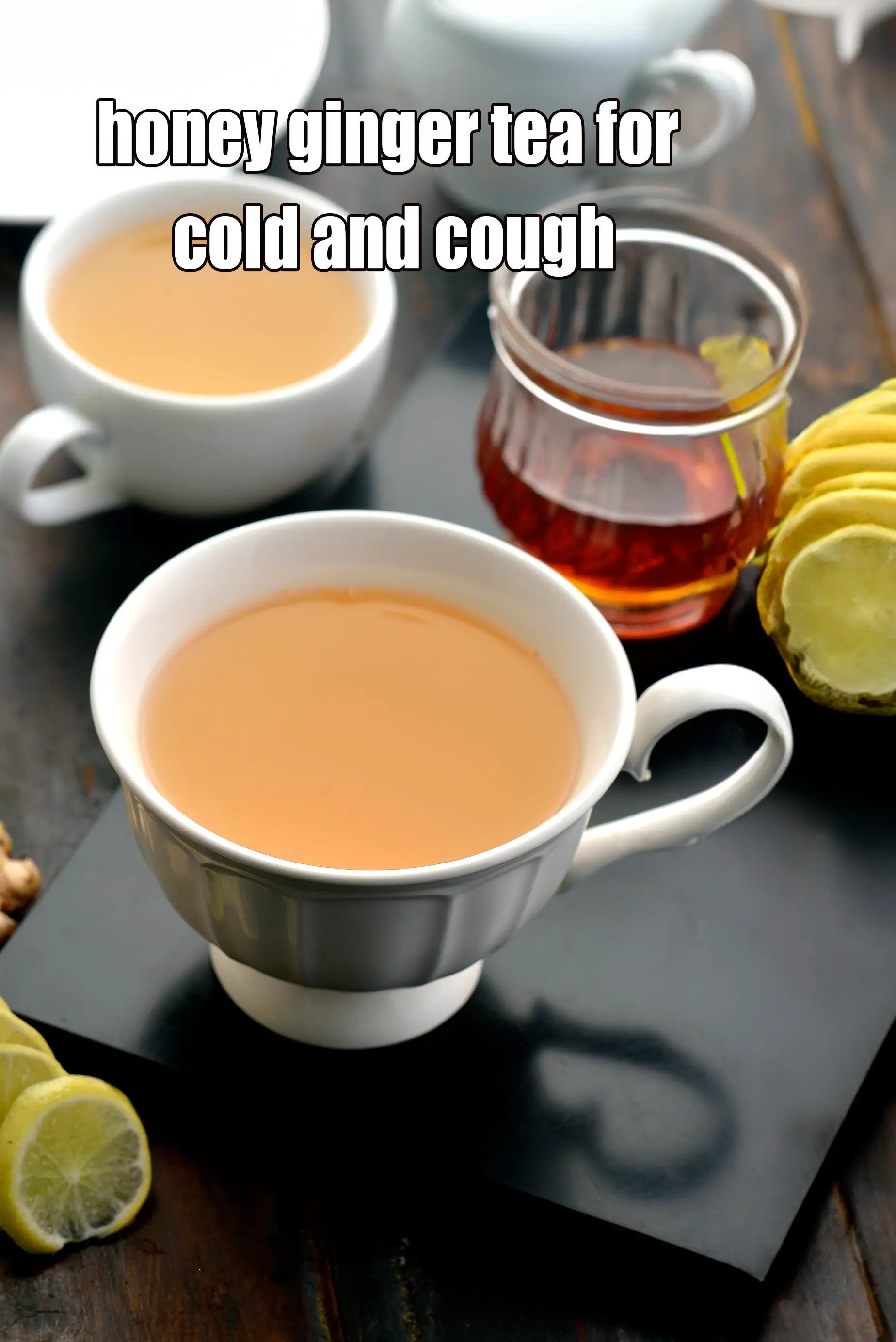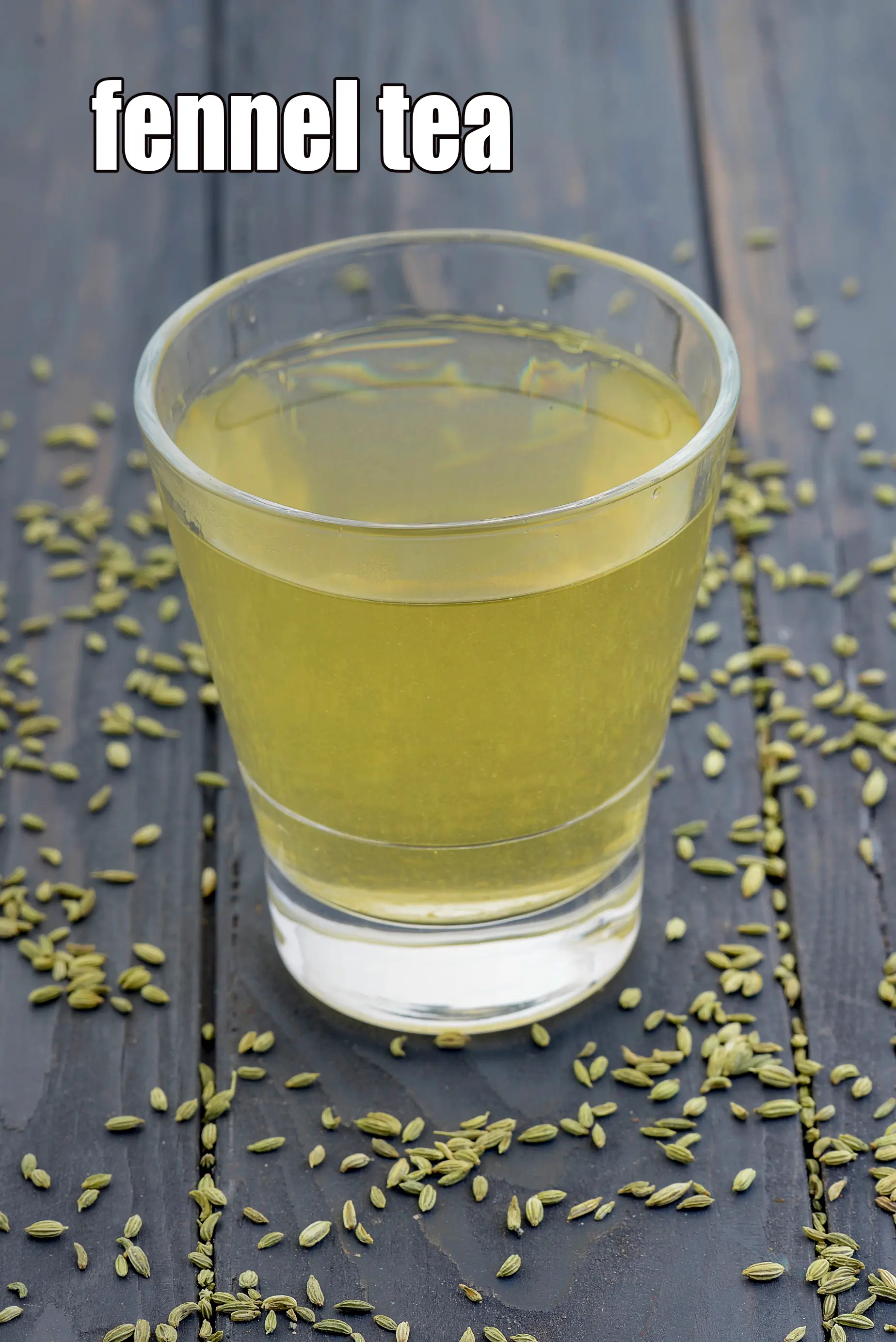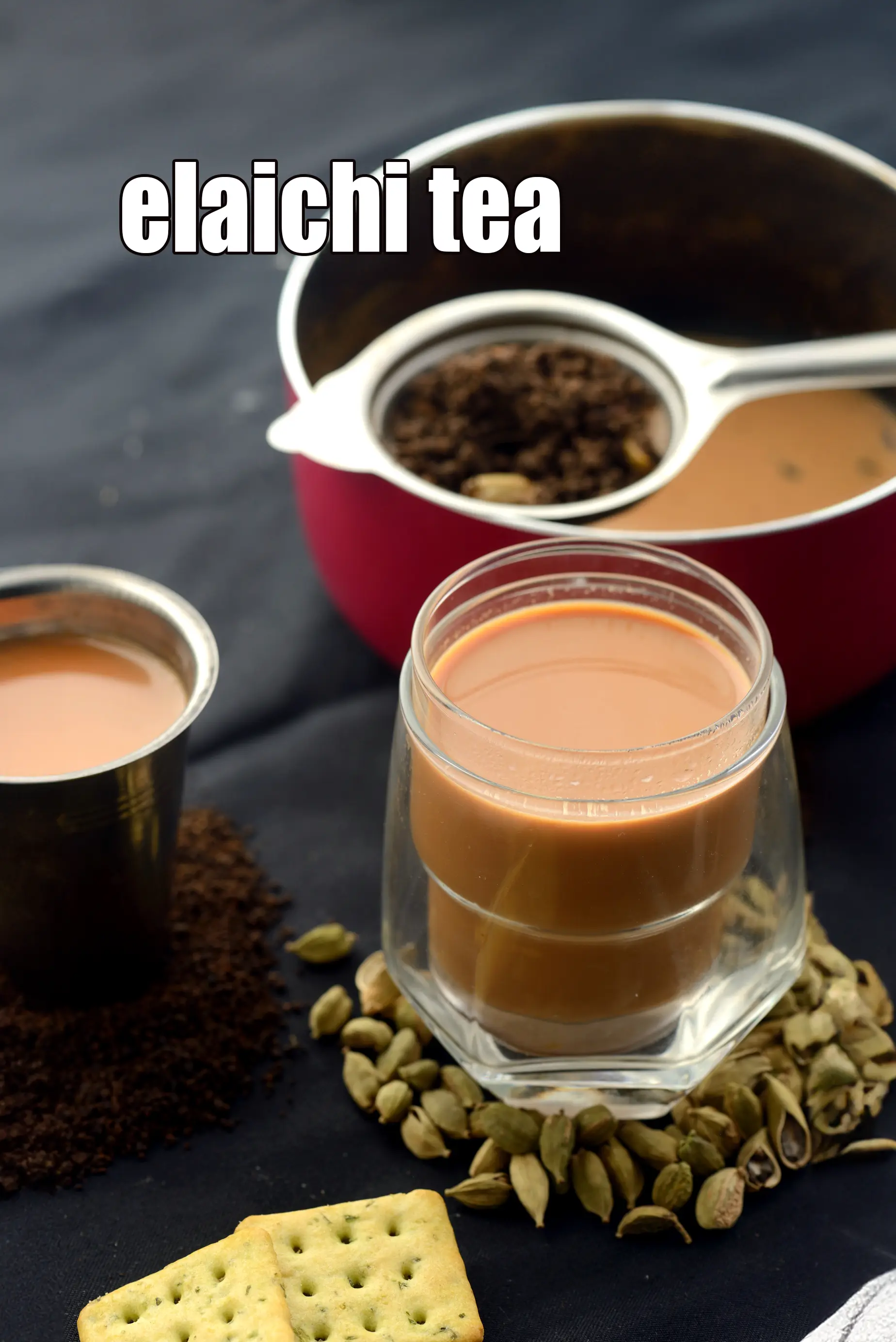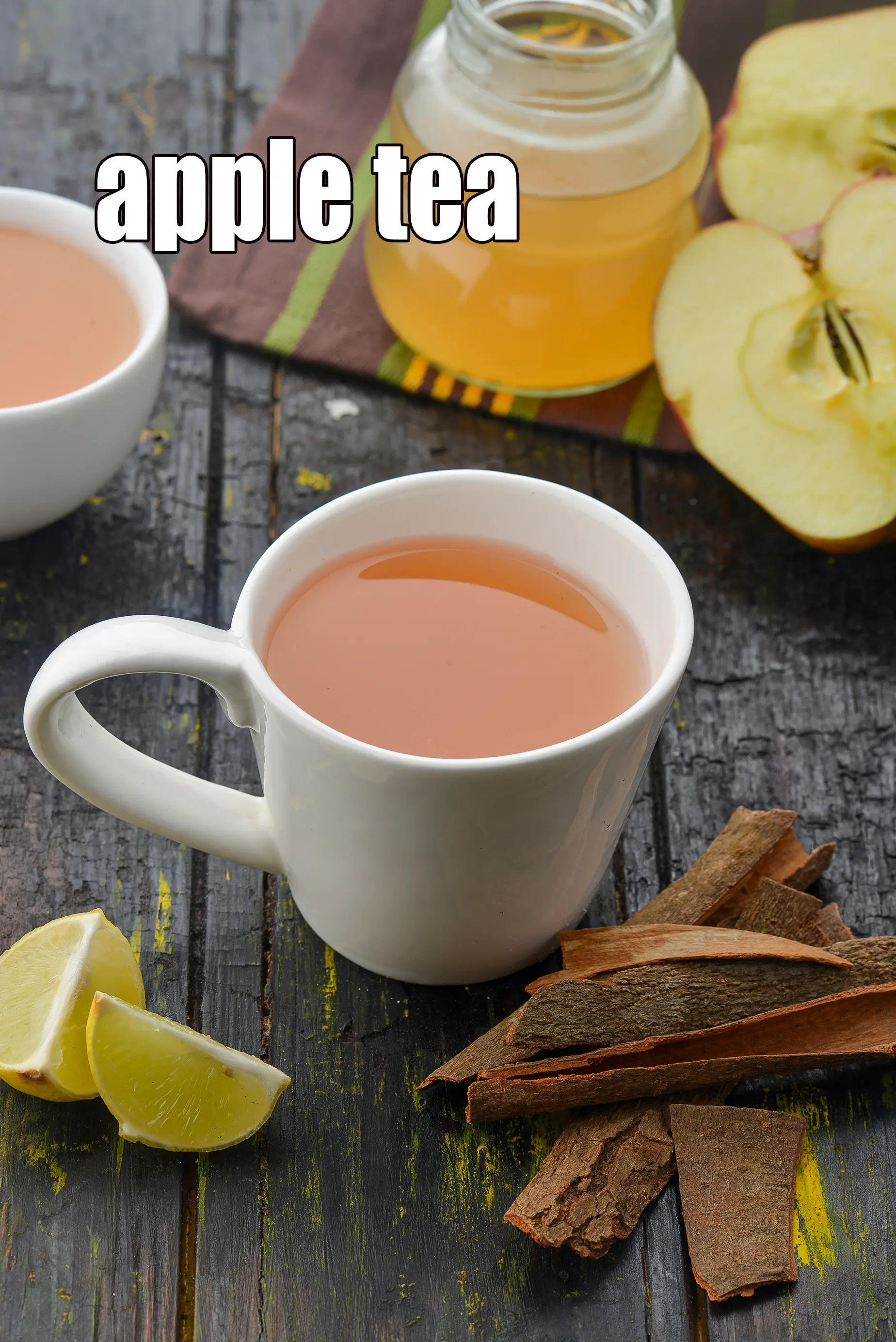Nutritional Facts of Sprouted Moong Khichdi, Microwave Recipe, Calories in Sprouted Moong Khichdi, Microwave Recipe
This calorie page has been viewed 5115 times
Course
Cooking Basics
Table of Content
How many calories does one serving of Sprouted Moong Khichdi have?
One serving of Sprouted Moong Khichdi gives 231 calories. Out of which carbohydrates comprise 129 calories, proteins account for 21 calories and remaining calories come from fat which is 82 calories. One serving of Sprouted Moong Khichdi provides about 12 percent of the total daily calorie requirement of a standard adult diet of 2,000 calories.
Click here to view Sprouted Moong Khichdi recipe | sprouted moong khichdi in the Microwave is a quick one pot recipe that offers a healthy and flavorful meal option. Learn how to make sprouted moong khichdi recipe | microwave sprouted moong khichdi | quick and easy Indian khichdi |
This microwave sprouted moong khichdi combines the nutritional benefits of sprouted moong beans with the convenience of microwave cooking, making it perfect for busy weeknights. The recipe typically involves combining sprouted moong, rice, water, and a blend of spices in a microwave-safe bowl. The mixture is then cooked in the microwave in short intervals, stirring occasionally to ensure even cooking. The result is a wholesome and satisfying sprouted moong khichdi that is packed with protein, fiber, and essential nutrients.
Sprouted Moong Khichdi in the microwave is a versatile dish that can be customized to suit individual preferences. You can add vegetables like carrots, peas, or french beans to enhance the nutritional value and flavor. The quick and easy Indian khichdi can be enjoyed as a standalone meal or paired with yogurt, raita, or pickle for a complete and balanced dining experience. This recipe offers a convenient and nutritious way to incorporate sprouted moong into your diet, promoting overall health and well-being.
Is Sprouted Moong Khichdi healthy?
Yes, but conditions apply.
Let's understand the ingredients.
What's good.
Sprouted Moong ( sprouted whole green gram) : Moong sprouts are nutri-dense sprouts. It’s a good source of several nutrients like b vitamins, potassium, magnesium, phosphorus. These sprouts are a protein boost. Sprouted moong is beneficial in relieving the symptoms of anaemia by building haemoglobin levels due to its high iron count. The fiber from sprouted moong has also been linked to lower LDL cholesterol (bad cholesterol) levels, thus decreasing the risk of heart diseases, helping to maintain blood pressure and good for pregnancy. See detailed benefits of sprouted moong in moong sprouts glossary.
Ghee : Other than calories and fats, the only nutrients that ghee is rich in are the vitamins – all of which are fat-soluble. All the 3 vitamins (Vitamin A, Vitamin E and Vitamin K) are antioxidants which have a role in removing free radicals from the body and protecting our cell as well as help in maintaining skin health and glow. Ghee is an excellent, high-quality selection medium of cooking because of its high smoke point. As compared to most oils and butter, ghee can handle a smoke point of 230°C, 450°F, thus its less prone to oxidant and destruction of nutrients. Yes, ghee does contain cholesterol, but some amount of cholesterol is needed by the body. Cholesterol has some functions to play too. It is necessary for hormone production, brain function, cell health and lubricating the joints. It is, in reality, a high quality fat for the body and brain. Ghee is loaded with fats but that’s medium chain fatty acids (MCT) which aid in weight loss. Ghee is healthy for daibetics in small amounts. Learn to easily make your ghee at home which is free of preservatives. See benefits of ghee.
Coconut : The fresh coconut has saturated fats but most of it is MCT (Medium Chain Triglycerides) which promote weight loss. The high fibre content of 13.6 gm (45.3% of RDA) along with high lauric acid content of coconut improves cholesterol levels in the body. Improving the action of insulin secretion and lowering the raised blood sugar levels is yet another benefit of coconut for Diabetics. See here for 10 amazing benefits of coconut.
What's the problem ?
Rice : Here are the pros for rice. Rice is a great source of complex carbohydrates, which is an important source of energy for our body. Moreover it is gluten free. Rice is low in fibre and therefore a good option for people suffering from diarrhoea. But rice is a good source of protein and B vitamins.
What's not good with rice? Foods like rice that are high in Glycemic index are not suitable for weight loss, heart patients, diabetics as they affect the blood sugar control levels. However if rice is combined with high protein or high fibre foods, the glycemic load can be balanced. Thus its combo is a better choice as we have done in the recipe of panch dhan khichdi and toovar dal khichdi. See details of is white rice and parboiled rice good for you?
Can diabetics, heart patients and overweight individuals have Sprouted Moong Khichdi?
Sprouted moong khichdi, in general, can be a healthy and suitable meal for diabetics, heart patients, and overweight individuals, but the recipe has some points to consider:
The Good:
- Sprouted Moong: Excellent source of protein, fiber, and various vitamins and minerals. Sprouting enhances the nutritional value and can make them easier to digest.
- Rice (especially brown rice): Provides carbohydrates for energy. Brown rice is preferable to white rice due to its higher fiber content.
- Ghee (in moderation): Ghee is a traditional fat used in Indian cooking. While it contains saturated fat, it's often considered healthier in moderation compared to other saturated fats.
- Spices (asafoetida, turmeric, coriander-cumin, chili): Add flavor and potential health benefits without adding significant calories or affecting blood sugar.
- Coconut (in moderation): Adds flavor and some healthy fats, but should be used in moderation due to its calorie and saturated fat content.
Considerations for Specific Conditions:
- Diabetes: Khichdi is often a recommended food for diabetics due to the combination of protein, fiber, and complex carbohydrates. However, portion control is crucial, and the type of rice used matters. Brown rice is better than white rice. It is important to monitor blood sugar levels after eating to understand individual responses.
- Heart Patients: The recipe uses ghee, which is a saturated fat. While moderate use is often acceptable, those with heart conditions should be mindful of their overall saturated fat intake. Using less ghee or substituting with a healthier oil (like olive oil or a blend of vegetable oils) could be beneficial. Salt should be used sparingly.
- Overweight Individuals: Khichdi is generally a good option due to its protein and fiber content, promoting satiety. However, portion control is still important for weight management.
Potential Issues and Recommendations:
- Rice Type: Using brown rice instead of white rice is highly recommended for better blood sugar control and increased fiber intake.
- Ghee: Consider reducing the amount of ghee or substituting with a healthier oil.
- Coconut: While coconut is nutritious, it's high in calories and saturated fat. Use it in moderation.
- Sugar: While the recipe includes sugar, it's a relatively small amount. However, if you're strictly controlling sugar intake, you can omit it. The sweetness from coconut might be enough.
- Salt: Use salt sparingly, especially for heart patients.
- Portion control: Even healthy food should be consumed in appropriate portions.
Overall:
Sprouted moong khichdi, when made with brown rice, less ghee or a healthier oil, and mindful portions, can be a very nutritious and suitable meal for diabetics, heart patients, and overweight individuals. However, it's always best to consult with a doctor or registered dietitian for personalized dietary advice, especially if you have any underlying health conditions. They can help you create a meal plan that meets your specific needs and preferences.
How to burn 231 calories that come from one serving of Sprouted Moong Khichdi?
Walking (6 kmph) = 1 hr 9 mins
Running (11 kmph) = 23 mins
Cycling (30 kmph) = 31 mins
Swimming (2 kmph) = 40 mins
Note: These values are approximate and calorie burning differs in each individual.
| Energy | 231 cal |
| Protein | 5.2 g |
| Carbohydrates | 32.2 g |
| Fiber | 4 g |
| Fat | 9.1 g |
| Cholesterol | 0 mg |
| Vitamin A | 173.3 mcg |
| Vitamin B1 | 0.1 mg |
| Vitamin B2 | 0.1 mg |
| Vitamin B3 | 0.9 mg |
| Vitamin C | 2.1 mg |
| Folic Acid | 4 mcg |
| Calcium | 20.9 mg |
| Iron | 0.8 mg |
| Magnesium | 42.3 mg |
| Phosphorus | 100.6 mg |
| Sodium | 4.2 mg |
| Potassium | 102.9 mg |
| Zinc | 0.7 mg |
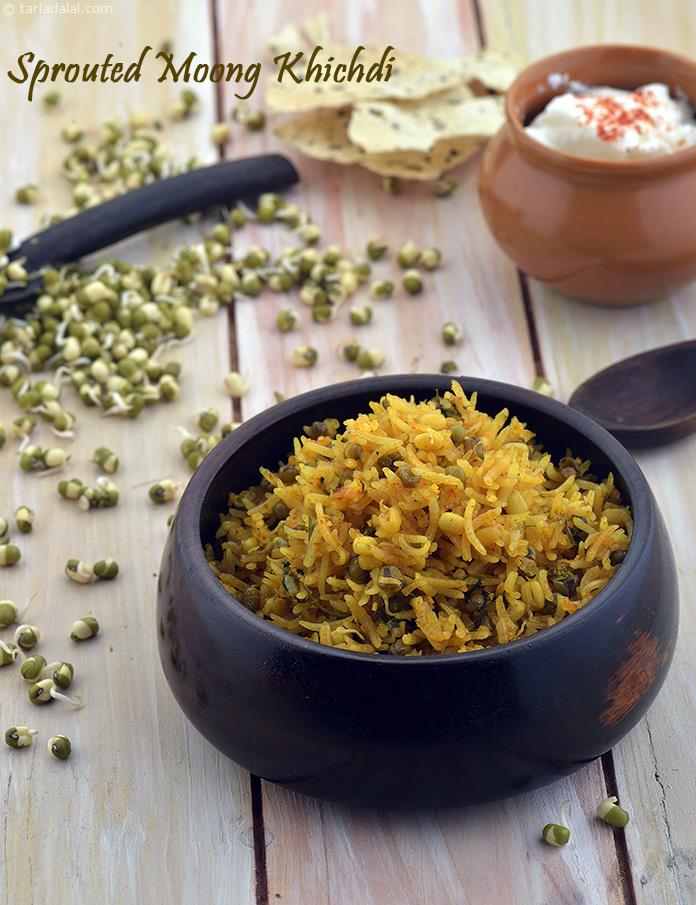
Click here to view Sprouted Moong Khichdi, Microwave Recipe
Calories in other related recipes
